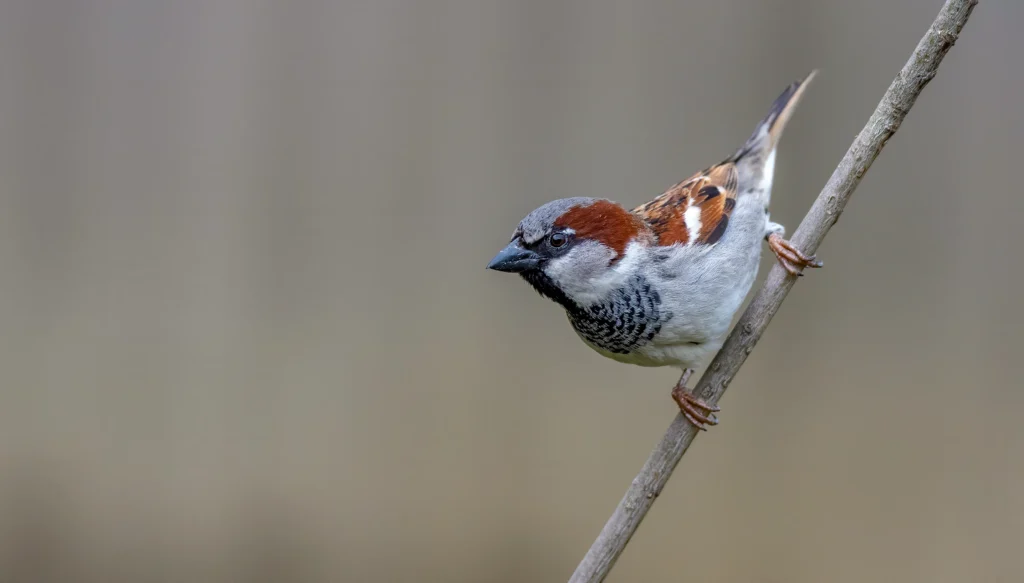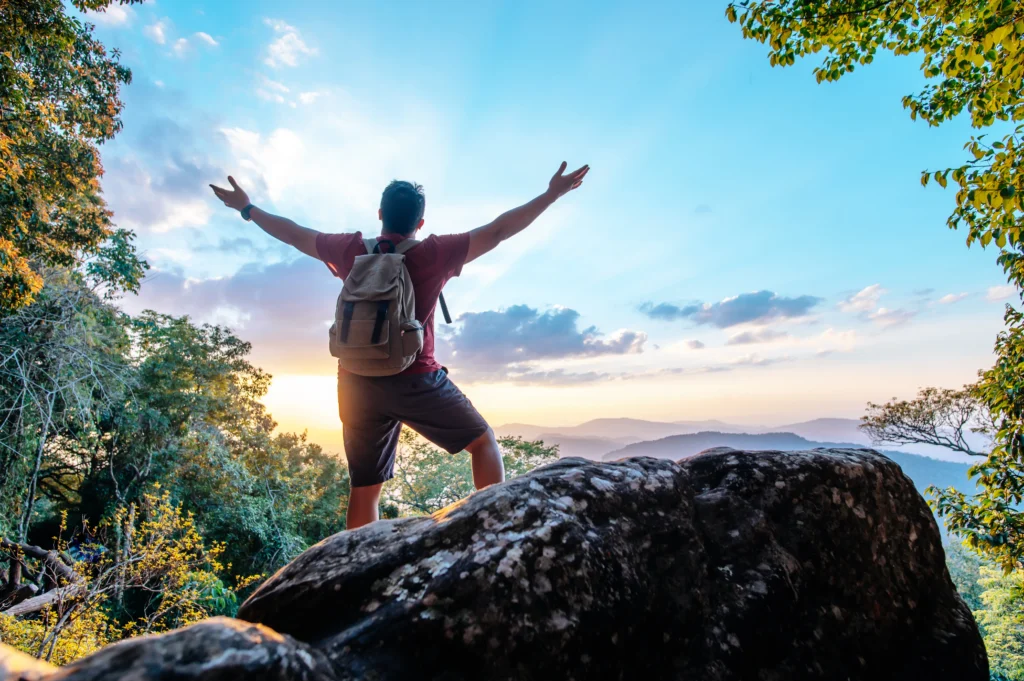Explore Uganda
Re - Discover Uganda - The Pearl Of Africa

Gorilla Trekking & Habituation
Uganda offers the highest number of gorilla families (22) that can be tracked in the wild, in Bwindi Impentrable Forest and Mgahinga National Park. Gorilla Trekking in Uganda is one of the most exciting wildlife activities you can partake in. To get up close to one of our closest living relatives in their own environment is truly unique, so much so that going on safari in Uganda has featured in numerous travel publications over the last few years as a “must see destination” on account of its Wildlife, Culture and Scenery:
Chimpanzee Trekking & Habituation
Chimpanzee Trekking in Uganda is one of the top experiences to do whilst on safari. This is because there is a concerted drive towards the conservation of approximately 5,000 chimpanzees that inhabit the country. Kibale Forest has the highest population with about 1,500 followed by Budongo Forest with about 650. In Queen Elizabeth National Park, about 250 chimpanzees live in the Kyambura Gorge and on Ngamba Island Sanctuary, 49 orphaned and rescued chimpanzees undergoing rehabilitation. The Kalinzu Forest Reserve in the Maramagambo Forest, one of Uganda’s biggest forests was recently gazetted and it too has chimpanzees.


Culture & Religion
Ugandan culture is reflected in the assorted cultural mosaic of legend, beliefs, music, dance, art, food, handicrafts, rituals, and kingdoms that cannot be matched in East Africa. What are more are the contrasts between the numerous peoples all add to Ugandan culture in terms of its wealth of traditions and depth of heritage many of which have been handed down from generation to generation through storytelling and songs.
Religion is a very important part of daily life in Uganda where less than 1% of the population claims to be atheist or agnostic. 85% of the population are Christian, either Catholic or Protestant, about 12% are Muslim, 1% follow traditional religions and the remaining 2 percent are share by the Bahá’í faith and other non-christian religions; Uganda is also home to a small native community of Jews.
Uganda boasts a variety of historic religious landmarks and a robust religious culture across several religions and sects, that make it a great destination for pilgrims looking to renew their faith or visitors keen on exploring the fascinating religious history of the country.
Eastern Uganda - Karamoja
The Karamojong sub region is north eastern Uganda is made up of the Karamojong, Jie, Tepeth, Kadama, Ik, Dodoth, Pokot, Labwor, Mening, Nyangia people. They are all predominantly nomadic cattle keepers who are very passionate about their culture, heritage and traditions. Historically they have link to the tribes and clans who migrated from what is now the Omo Valley via the Turkana region of northern Kenya where some continued down to the Maasai regions of South West Kenya and North West Tanzania. Years of isolation dues to various circumstances has meant that a customs and ancestral beliefs within the region are as relevant and strong as ever, making it a truly unique place to visit and experience.


Bird Watching
With 1,063 of the 2,250 bird species recorded on the African continent, Uganda is the richest birding destination in Africa and considering the number of bird species per square kilometre, the tenth worldwide. Uganda’s birds have no shortage of habitats to inhabit; the dense tropical rainforests of the Albertine Rift Valley, the montane forests, the scenic shores of the Great Lakes, crater lakes and River Nile, the vast swamps and wetlands, and even the semi-arid desert plains of the northeast in Kidepo Valley National Park.
The best part about birding in Uganda is that watching birds is very easy, and can sometimes start right from the airport in Entebbe. All 10 National Parks host a long list of both local and visiting birds and birding can be done on nature walks and hikes, game drives, boat and canoe ride.
Wildlife in Uganda
Uganda’s biodiversity and ecology are an eclectic and rare mix of both the East African savannah and the West African Jungle. Despite the fairly small size of the country, the sheer variety of natural habitats, each with their own peculiarity, is quite mind-blowing.
Western Uganda, which lies in the Albertine Rift Valley wins the cup for the most diverse habitats, which are largely protected inside national parks. It has 2 Great Lakes; Lake Albert and Lake Edward and the much smaller Lake George, 2 volcanic ranges; the snow-peaked Rwenzori Mountains and the gorilla-inhabited Virunga Mountains, large swathes of lush equatorial rainforest; including Bwindi Impenetrable Forest, Semiliki Forest and Kibale Forest, and expansive grasslands; in Queen Elizabeth Park, Murchison Falls Park and Lake Mburo Park. Although Northeastern Uganda including Kidepo Valley Park is mostly a semi-arid wilderness, it is still a favoured habitat for many animals.


Responsible Tourism in Uganda
Responsible Tourism as defined in Cape Town in 2002 at the World Summit for Sustainable Development is: “making better places for people to live in and better places for people to visit.” Responsible Tourism requires that operators, hoteliers, governments, local people and tourists take responsibility, take action to make tourism more sustainable”
At Let’s Go Travel we are passionate about Responsible Tourism and actively practice it by working with social enterprises whose goals are to helping people who don’t have the same opportunities as us. By working within tourism zones this enables the local people who are part of the social enterprise to also benefit from tourism.
Lakes, Rivers & Waterfalls
The world’s longest river, River Nile; Africa’s largest lake, Lake Victoria; and Africa’s second deepest lake, Lake Bunyonyi, are all found in Uganda.
Almost one-fifth of Uganda’s total area is open water or swampland comprising a great number of lakes and rivers notably 4 of the African Great Lakes; Albert, Edward, Kyoga and Victoria and the River Nile, the longest river in the world. In the mountainous west and southwest, several crater lakes that have been formed over thousands of years are a beauty to behold.
On offer are a host of water-based treats including the famed Murchison Falls and Kazinga Channel boat cruises and adventure activities like white-water rafting and bungee jumping at the Nile. Uganda’s lakes and rivers present limitless opportunities to explore the varied biodiversity in and around their basins for birding and game viewing alike.


Hiking & Mountaineering
ganda like many parts of Africa has over many several millennia experienced considerable volcanic activity along the East African Rift Valley, which has left behind an assortment of volcanic peaks. These mountains that are now extinct are protected within the confines of national parks and offer stunning areas for trekking for both inexperienced hikers and experienced mountaineers who welcome a challenge.
On Uganda’s western frontier are the Rwenzori Mountains; the highest block mountain in Africa, in the east, is Mt. Elgon, the oldest and largest solitary volcano in Africa, and in the extreme southwest, are the extinct Virunga Mountains where some of the world’s last remaining mountain gorillas live. The distinction that Uganda’s peaks present is the favourable Ugandan climate and the outstanding scenery around and on these mountains with all manner of wildlife and plants, that make hiking and mountaineering in Uganda a truly unique and rewarding experience.
Adventure
In Uganda, adventure is synonymous with Jinja and the River Nile, and a trip to Uganda is never complete without visiting both. Although Jinja is a small quiet town, one only needs to venture a short distance from the town centre to find that it is also a giant playground for thrill-seekers. From mountain biking to white-water rafting; from bungee jumping to quad biking; from horse riding to jet boating; from paddleboarding to fishing excursions, there are enough adrenaline-fuelled activities in Jinja to keep everyone’s pulse racing.
At the heart of this playground is the River Nile, which starts its six thousand, eight hundred and sixty three-kilometre journey to the Mediterranean Sea, in Jinja. The stretch of the White Nile between Jinja and Bujagali is world-famous for its wild rapids; the volume of water here is equivalent to ten times that of the River Zambezi. Thankfully, the river is not overcrowded with motorised boats and engines; on the contrary, river traffic at the source is limited to dugout canoes, kayaks, rafts and elusive river otters and monitor lizards.


Coffee & Cocoa Safaris
Coffee growing in Uganda is mostly done by smallholder farmers who intercrop their coffee trees with traditional food crops, usually utilising the shade of banana trees and other shade trees. In these self sustaining conditions, coffee is left to grow naturally, flowering on average twice a year. Uganda has the perfect climate for growing coffee, lots of rainfall and nutrient rich soil. There are 5 primary areas where coffee is grown:
Northern Region – Lira and Gulu
Central and Southwest Region – Mukuno, Kampala, Masaka & Jinja
Western Region – Kasese and Mbarara
West Nile Region – Okoro


